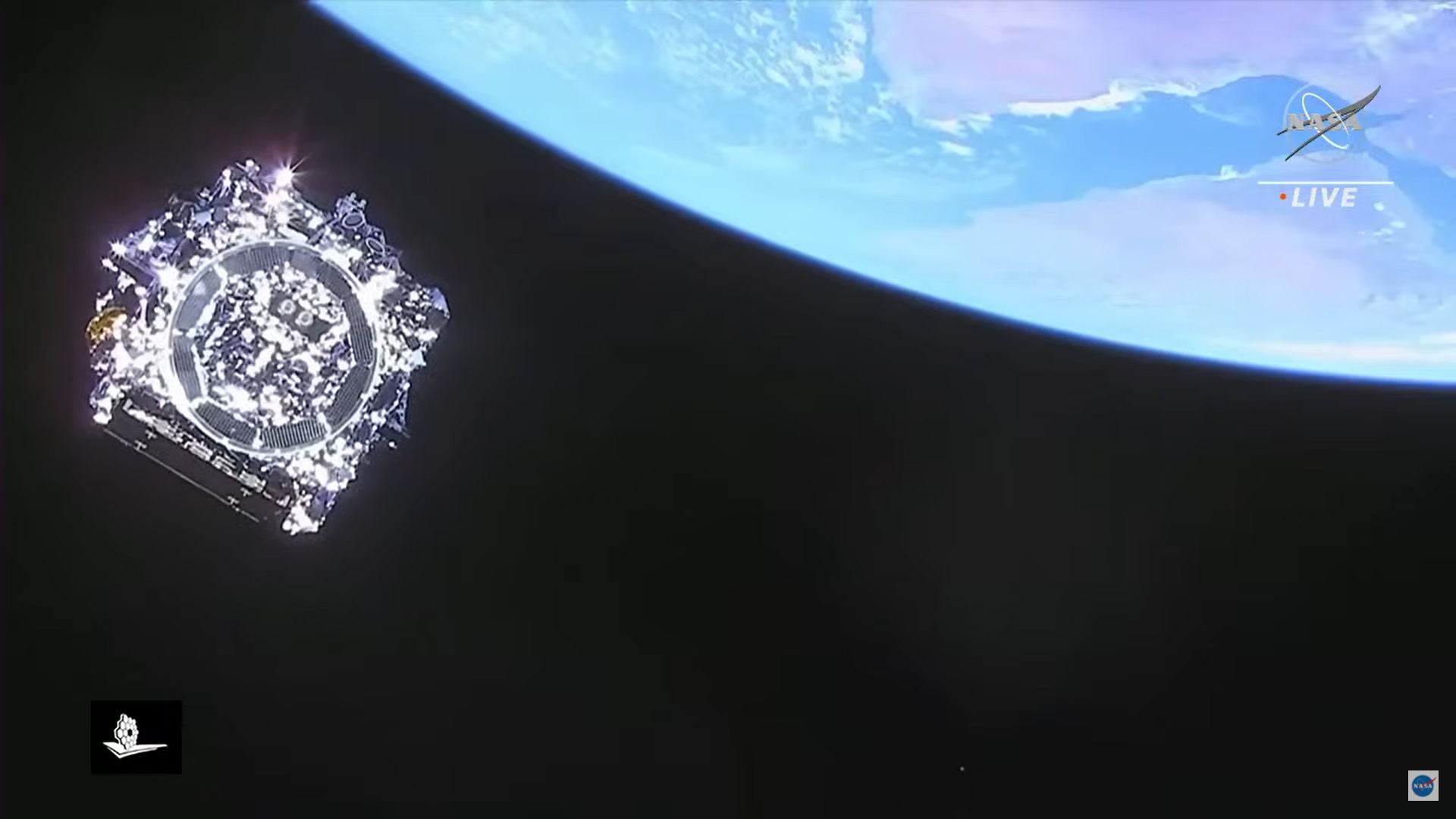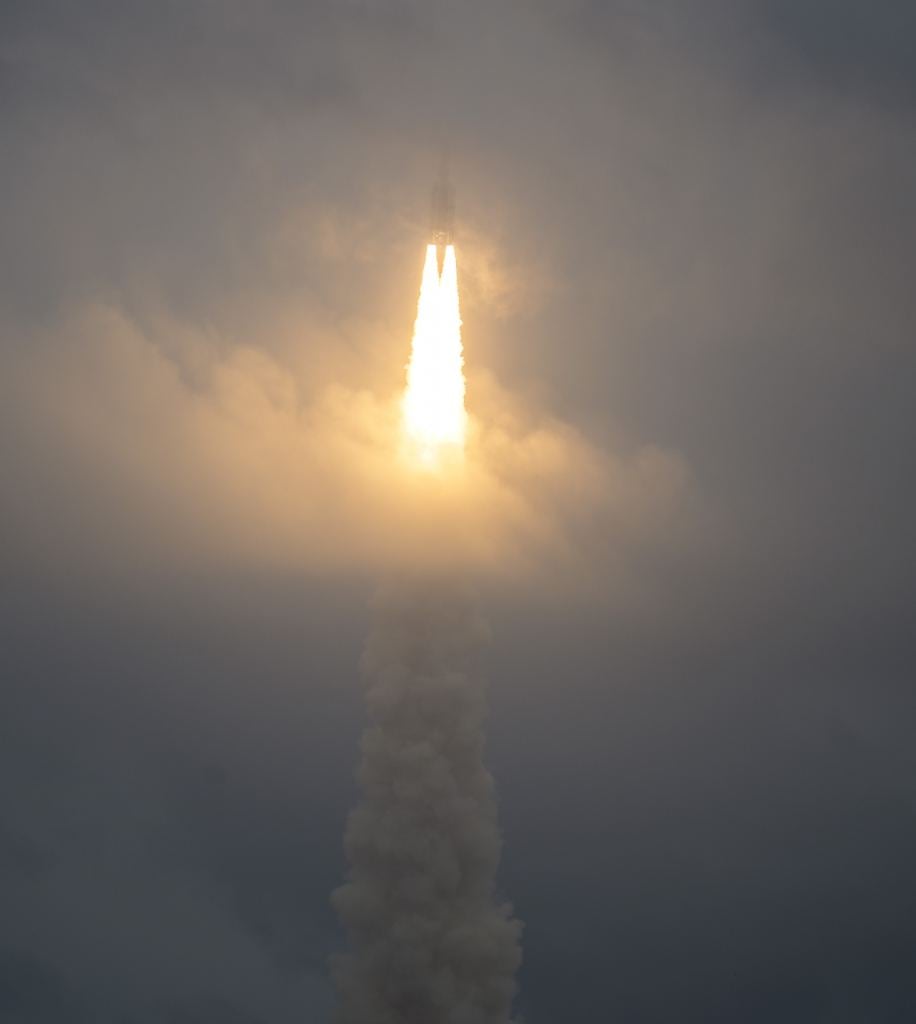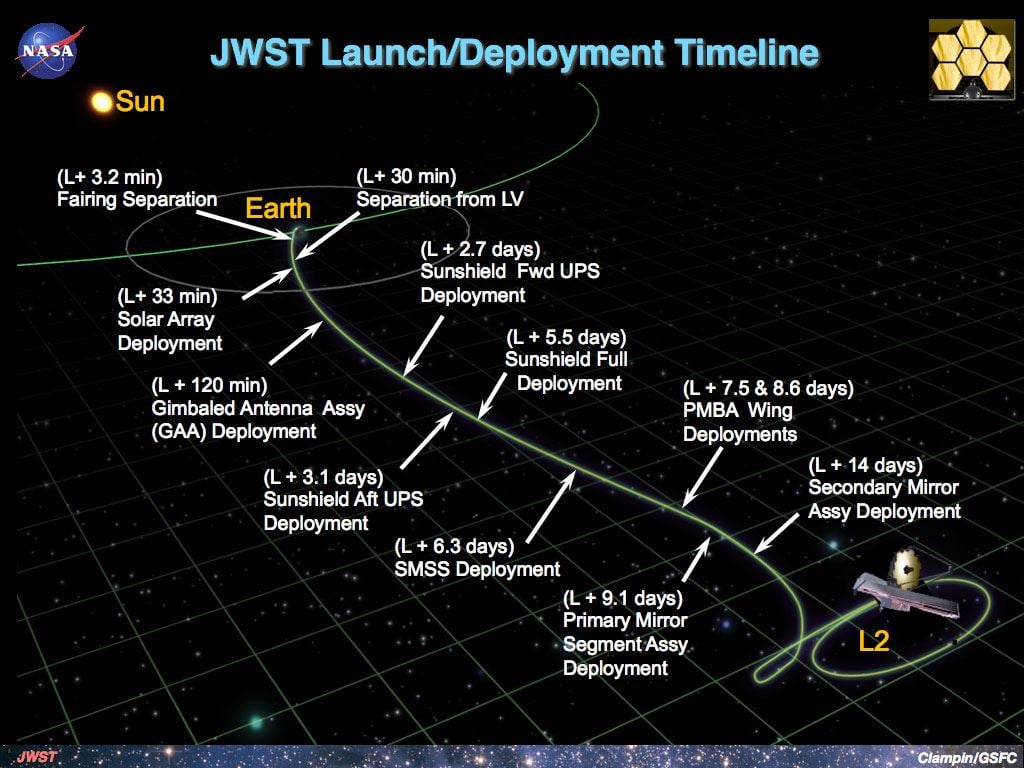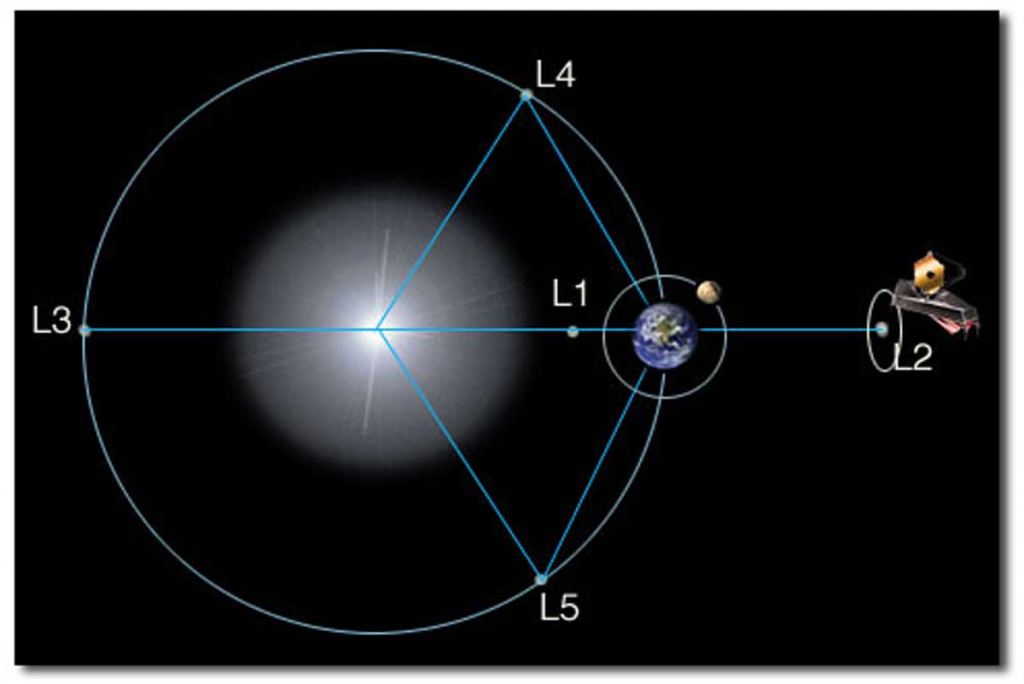It's really happening. After all the years of delays, reschedulings, budget shortfalls, and even more delays, the James Webb Space Telescope (JWST) launched on December 25 and is now successfully on its way to is destination at the second LaGrange point (L2), about 1.5 million km (1 million miles) from Earth.
If you celebrate Christmas and are astronomically inclined, the launch feels like a true Christmas miracle.
The footage of JWST's separation from the Ariane 5 rocket, as seen from a camera on the rocket's second stage is just absolutely stunning.
Loading tweet...
— View on Twitter
The long-awaited next generation space observatory is a joint effort between NASA, ESA (European Space Agency) and the Canadian Space Agency. If the myriad deploys and burns go off without a hitch, Webb will be able to see the light from the first galaxies in the early universe, peer at the atmospheres of exoplanets, as well being able to look closely at objects in our own solar system.
So far, all is going well. One curiosity is that the solar array deployment took place about 3 minutes ahead of the published timeline, and the deploy was still in view of the rocket stage camera. Later, NASA Associate Administrator Thomas Zurbuchen explained on Twitter: "Recall that most commands from now on come from ground and they are given when certain conditions are reached. Solar array deployment was so much quicker because tip-off by @ariane5 was almost perfect, exceeding what was expected."
You can see more launch and pre-launch images at NASA's Flic kr page.
At about 12.5 hours into the flight, a course correction burn was executed to put Webb on a good trajectory to its destination in space. The burn lasted 65 minutes. If that sounds long (which it does), according to mission experts, the burn could have endured as long as 3 hours. The shorter burn is good news for the observatory's long-term fuel availability.
Loading tweet...
— View on Twitter
For deployments today: the Gimbaled Antenna Assembly (GAA) holds Webb's high rate antenna. It will be rotated to its parked position pointed back to the Earth. This is an 'automatic' deployment. All other deployments will be controlled by commands from the ground
Why is Webb going to be so far away from Earth and why L2?
"L2 is short-hand for the second Lagrange Point, a wonderful accident of gravity and orbital mechanics, and the perfect place to park the Webb telescope in space," wrote astronomer Michelle Thaller in a NASA blog post. "There are five so-called "Lagrange Points" - areas where gravity from the sun and Earth balance the orbital motion of a satellite. Putting a spacecraft at any of these points allows it to stay in a fixed position relative to the Earth and sun with a minimal amount of energy needed for course correction."
As it goes through all the major deployments over the next month in " 30 Days of Terror”, it will be a nail-biting time. It will also take six months of commissioning in space before first light, when Webb will deliver its first images.
The observatory carries four state-of-the-art science instruments with highly sensitive infrared detectors of unprecedented resolution. Webb will study infrared light from celestial objects with much greater clarity than ever before. The mission is the scientific successor to NASA's iconic Hubble and Spitzer space telescopes, built to complement and further the scientific discoveries of these and other missions.
More news to come, for sure.
Learn more about JWST at this NASA website, or at the STScI website. NASA also has a great "dashboard" where you can see where JWST is, and what is happening with the observatory.
 Universe Today
Universe Today



